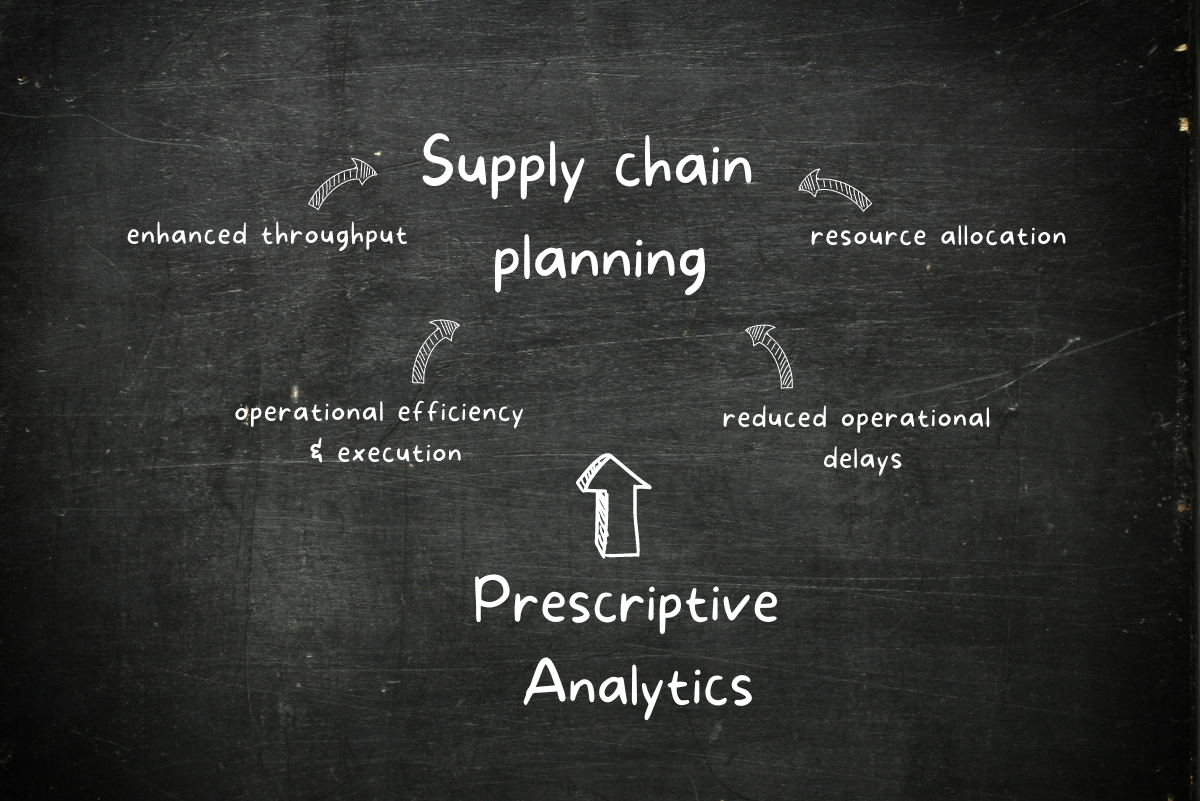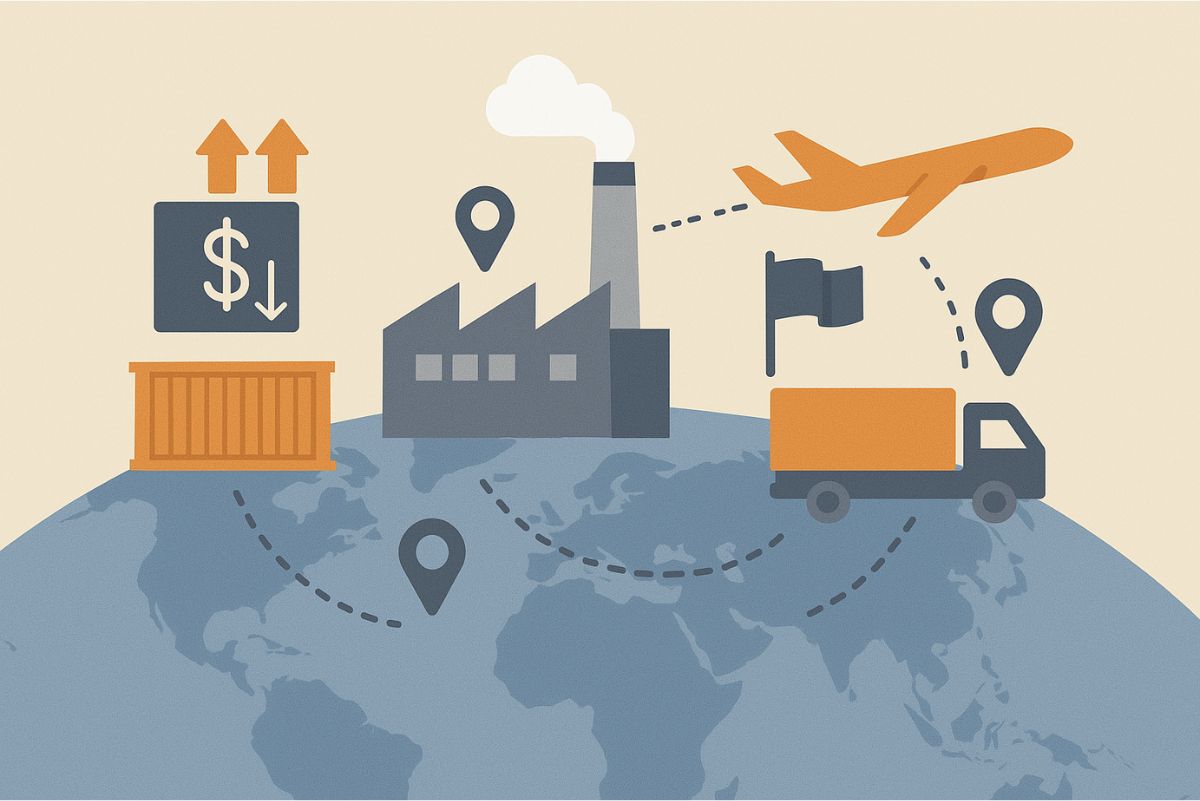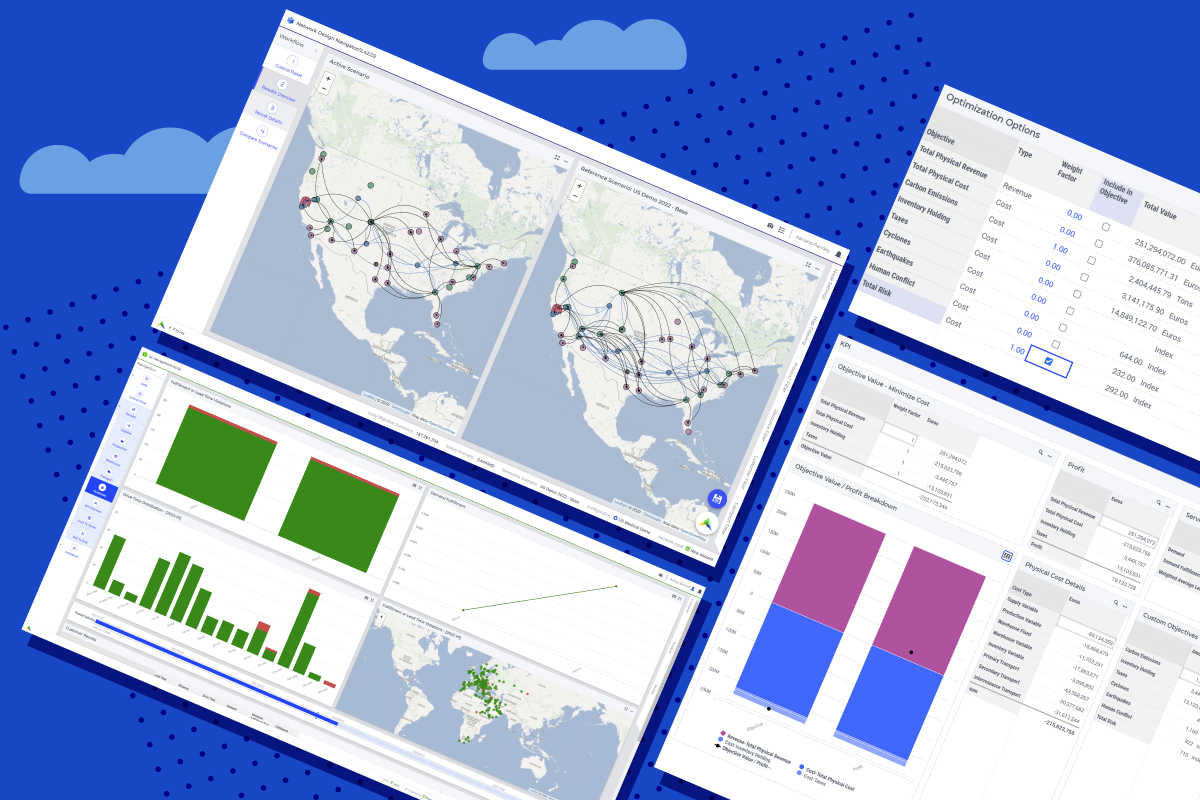Global Chaos Drives Increased use of Prescriptive Analytics in Supply Chain Planning
In the wake of major economic change and disruption to labor markets, supply chain networks around the world are benefitting significantly from prescriptive analytics. Combining data with mathematical optimization techniques enables major global brands to redefine their supply chain networks, leveraging analytics to pre-empt (and prevent) bottlenecks.
Managing the hangover from the COVID-19 pandemic continues to be a priority for economies around the world. National lockdowns slowed the transit of raw materials, investment was curtailed, and labor shortages – in part, due to individuals leaving the workforce – stunted the potential economic rebound. The Global Supply Chain Pressure Index reached an all-time high in 2021 and remains above pre-pandemic levels.
Away from the pandemic, other issues are disrupting global supply chains, including:
- shifts in demand
- the Russia-Ukraine conflict
- macro-economic factors, like inflation
- other geopolitical issues
In the wake of the global crises impacting supply chains, simply having good data is not enough. Traditional tools, such as spreadsheets, will no longer deliver sufficient insight. The key to improving supply chain planning is the ability to continuously run scenarios using prescriptive analytics technology.
Importance of prescriptive analytics in supply chain planning
Most business analytics solutions can offer detailed insights into what happened in the past. However, they are not often capable of prescribing the most optimal solution when facing tens of thousands or even millions of choices.
Prescriptive analytics uses mathematical optimization to cut through this complexity, providing recommended actions to optimize decisions around the manufacture, purchase, movement, and storage of goods.
Prescriptive analytics within supply chains is a proven solution, enabling extra visibility into the flow of goods and the advanced optimization of the entire distribution network.
Benefits companies are witnessing using prescriptive analytics in their supply chain planning
The complexity of supply chain planning stems from competing business interests that are all interconnected. Each of these business interests has its own trade-offs to manage but organizations need visibility into these collective trade-offs if they are to optimize their supply chains. Unfortunately, 53% of businesses have limited or no ability to understand the trade-offs within their respective business units.
This lack of visibility prevents businesses from optimizing their supply chains. If this is resolved, the following benefits of prescriptive analytics could be realized:
1. Optimized Network Design
Supply chain network design is the practice of modeling the supply chain to understand how resources should be located and utilized. This enables businesses to meet target service levels at the lowest possible cost. It determines the capacity of the company’s facilities and the flow of goods – from the source to the point of consumption.
2. Optimized planning
Tactical planning can be transformed from simply balancing supply and demand volumes to optimizing how this balancing can maximize profit, optimize lead times, and make informed decisions around sustainability and risk.
3. Cut out inefficiencies
Reduce waste within supply chains by using prescriptive analytics to assess where unnecessary expenditure is occurring.
4. Protect your bottom line
Growth is a key aim for all companies, but it comes with risk. Prescriptive analytics can reduce this risk by allowing businesses to simulate how the expansion will impact their supply chain and, ultimately, their bottom line.
Many organizations are already enjoying the benefits of prescriptive analytics, leading to more accurate, data-driven decisions. We’ve included one notable example below.
Optimizing strategic decisions at BT Supply Chain – Use-Case
Behind the scenes at one of the largest telecommunications providers in the UK, BT Supply Chain makes sure the company’s engineers have access to the tools, parts, and equipment they need to fulfill customer orders. Recently BT Supply Chain invested in new infrastructure, systems and capabilities, undergoing a significant transformation. As part of this change, BT Supply Chain enlisted the support of AIMMS.
As part of the collaboration, BT Supply Chain uses AIMMS’ Network Design Navigator to Allocate engineers to spare parts pick-up locations that are within 15 minutes drive time. This helps to make sure that engineers can spend more time repairing equipment, and less time driving to pick up spare parts.
BT also uses AIMMS for spare dimensioning on a weekly basis. AIMMS helps them to decide at which forward stocking locations spares should be placed in order to maximize service levels, taking into account any constraints on the supply of spare parts.
In addition, BT uses AIMMS to optimize their DC footprint to ensure that service levels throughout the country can be maintained, while at the same time minimizing costs.
More importantly, the prescriptive nature of AIMMS solutions has allowed BT Supply Chain to enhance its speed of decision-making and the quality of its customer engagements. While previously, BT Supply Chain used Excel-based models, these lacked the kind of granularity and speed the company needed.
With AIMMS, network design data can be quickly modeled, an output generated, multiple iterations speedily processed, and a clear answer delivered. It doesn’t simply analyze BT Supply Chain’s network design, it has provided insights from a network optimization standpoint that have not only enabled the company to transform its supply chain services but grow its entire business.
Read the full interview with David Mackenzie, Transformation & Inventory Director at BT here – How BT is Building a Connected Supply Chain Amidst Ongoing Transformation?
Optimize your supply chain with AIMMS prescriptive analytics technology
Unlike descriptive analytics, prescriptive analytics determines ways in which business processes should evolve or be modified. It is future-looking, taking into account inputs, outputs, variable decisions, and business objectives.
At AIMMS, we can help you make the leap toward data-driven decisions. We offer a way for businesses to receive supply chain planning recommendations using detailed optimization modeling delivered via a user-friendly interface.
Find out how AIMMS can optimize your entire supply chain using prescriptive analytics. Get in touch with us today.





